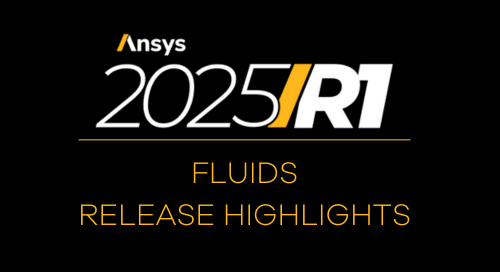Ansys SpaceClaim Blocks allows for easy ground-up parameterization of a model. To enable Blocks, navigate to Design -> Blocks:
Once enabled, all actions will be recorded using the Blocks feature, which tracks the SpaceClaim Scripting Code for the actions taken and aggregates them into easy-to-use “blocks” in the GUI interface.
To create a ground-up design we typically start with sketching. When sketching while using Blocks, the most important thing to keep in mind is that if you want a dimension to be tracked you need to ensure you utilize the Dimension tool:
Using this tool enables individual dimensions to be modified once the Block is finished.
To finish a Block from sketching, add all your desired dimensions and then click End Sketch Editing:
Doing so will create your sketching block, where you can hit the down arrow on the left to edit it:
Here you can see the two dimensions that were created, D1 & D2. From here, these dimensions can be directly edited or changed into parametric components by clicking on the >P. Once it is added as a parameter, it will be highlighted and you will see it in the Parameters box below the Block Recording:
Once you’ve finished parameterizing your sketch, you can now start to create 3D objects using the pull or other 3D tools. When performing 3D creation actions, you do not need to worry about using a Dimension tool as any driving dimensions you input will be added into your Block Edit actions. Below, the Blocks are shown for a Revolve and an Extrude:
As you can see, you have plenty of options you can add as parameters or edit. If you wanted to change your Revolve Axis from the y-axis to the x-axis, you just need to click the Selection button (right next to the Axis Selection), select the x-axis, and then hit the checkmark on the top left of the screen:
Once done, you will now have a greyed-out box for the Extrude Face since it came after the revolve. To update your model, simply click the play button in the top right of the screen. This will then execute all the following blocks you have and rebuild your model:
Lastly, you can continue to parameterize dimensions if you’d like, and you can even have them be a function of another parameter. Say you wanted the length of the Extrude Face to be the same as the edge length of our rectangular sketch (parameter B1_Dimension_P1 (D2)), you can write in “B1_Dimension_P1” into the dimension box:
Doing so will change the Block to have a lightning bolt on the left side, this just means it needs to be updated by hitting the play button:
We now have the foundations for our parametric model. At this point, we can change the value of B1_Dimension_P1 from 100mm to 50mm, hit the play button, and watch the model update:
You can continue to build on your model, adding in parametric dimensions, constraining dimensions to each other, and creating dependent features, all using the SpaceClaim Blocks tool.
About the Author
Follow on Linkedin More Content by Chris Smith










